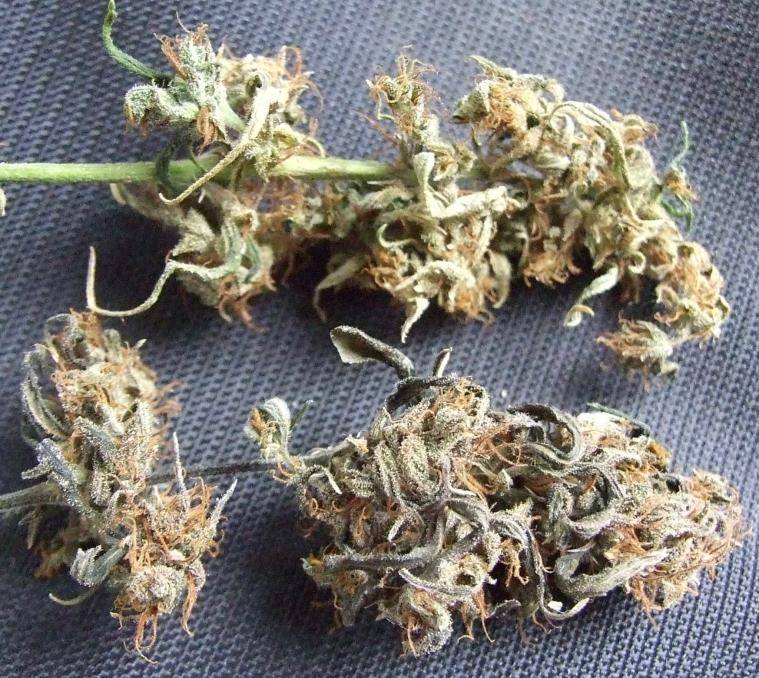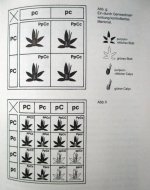i've posted this over on ace's oldtimers haze thread, but thought i'd throw it in the breeders' pool and see if it swims...
regarding my compact fast-finishing purple OT haze:
dubi (breeder, ace seeds) mentioned before that there are compact fast-finishing green OTH phenos, here from post 1498...
"There's a more compact and faster flowering Green Haze pheno, it usually has thicker stems, and it can be done
in 14-16 weeks of flowering, depending on the growing conditions, in contrast with the taller, longer flowering phenos
that need 16-20+ weeks to mature properly .... cold outdoor weather in late flowering helps to avoid reflowerings
and to speed up the maturation process."
and when my compact girl turned purple dubi added (post 1514)...
"Lovely Purple Haze Hope you are not dissapointed to find a purple one in your pack of Green Haze.
Green Haze release certainly produces mostly green phenos, but since this release has been produced by open
pollinating many different Green Haze parental plants there's always a chance that an unexpected recessive
purple pheno come out."
i'm guessing that i've got the compact green pheno, but with a recessive purple coloration/aroma/thin stem and leaf orientation?
her effect is much more green-leaning (e.g., euphoric, "extrospective").
she also has noticeably larger trichome heads than the others'.
[another description of their highs from post: "the compact purple is done in around 14wks, from clone.
her high has practically zero-introspection, and is very similar to
the green haze's high- with a little more smile-enducing euphoria
(and a touch of giddy jitter) in the purple, and a little more
straight-up caffeinic energy in the green.
i wonder if the purple's a very mexican-leaning OT haze..."]
as well as being more compact in structure, her buds also tended that way as well, with less fox-tailing...

pure green OTH, top. compact POTH pheno bud, bottom.
questions for the breeder community:
when using her to make s1/S1 seeds, do you have a guess what percentage of off-spring will have her specific nature (i.e., compact fast-finishing POTH)?
i wonder if we'd see a percentage of just the green compact phenos in those off-spring too.
do you have any general advice for getting a unique pheno's characteristics to carry over in crosses you make with her?
i was looking forward to making crosses, but maybe i should flower out some of her s1/S1 off-spring first to get to know how she performs...
maybe do a selection from them?...
thanks!
regarding my compact fast-finishing purple OT haze:
dubi (breeder, ace seeds) mentioned before that there are compact fast-finishing green OTH phenos, here from post 1498...
"There's a more compact and faster flowering Green Haze pheno, it usually has thicker stems, and it can be done
in 14-16 weeks of flowering, depending on the growing conditions, in contrast with the taller, longer flowering phenos
that need 16-20+ weeks to mature properly .... cold outdoor weather in late flowering helps to avoid reflowerings
and to speed up the maturation process."
and when my compact girl turned purple dubi added (post 1514)...
"Lovely Purple Haze Hope you are not dissapointed to find a purple one in your pack of Green Haze.
Green Haze release certainly produces mostly green phenos, but since this release has been produced by open
pollinating many different Green Haze parental plants there's always a chance that an unexpected recessive
purple pheno come out."
i'm guessing that i've got the compact green pheno, but with a recessive purple coloration/aroma/thin stem and leaf orientation?
her effect is much more green-leaning (e.g., euphoric, "extrospective").
she also has noticeably larger trichome heads than the others'.
[another description of their highs from post: "the compact purple is done in around 14wks, from clone.
her high has practically zero-introspection, and is very similar to
the green haze's high- with a little more smile-enducing euphoria
(and a touch of giddy jitter) in the purple, and a little more
straight-up caffeinic energy in the green.
i wonder if the purple's a very mexican-leaning OT haze..."]
as well as being more compact in structure, her buds also tended that way as well, with less fox-tailing...
pure green OTH, top. compact POTH pheno bud, bottom.
questions for the breeder community:
when using her to make s1/S1 seeds, do you have a guess what percentage of off-spring will have her specific nature (i.e., compact fast-finishing POTH)?
i wonder if we'd see a percentage of just the green compact phenos in those off-spring too.
do you have any general advice for getting a unique pheno's characteristics to carry over in crosses you make with her?
i was looking forward to making crosses, but maybe i should flower out some of her s1/S1 off-spring first to get to know how she performs...
maybe do a selection from them?...
thanks!

 ;
;






